Sanja Fidler
NVIDIA, University of Toronto, Vector Institute
Learning to Generate Diverse Dance Motions with Transformer
Aug 18, 2020


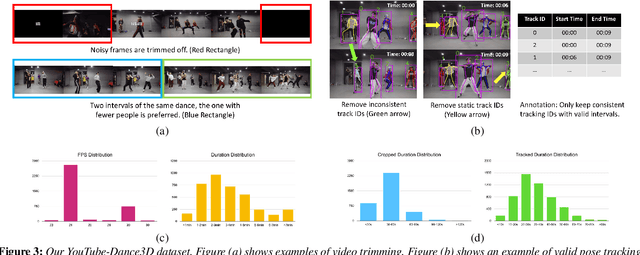
Abstract:With the ongoing pandemic, virtual concerts and live events using digitized performances of musicians are getting traction on massive multiplayer online worlds. However, well choreographed dance movements are extremely complex to animate and would involve an expensive and tedious production process. In addition to the use of complex motion capture systems, it typically requires a collaborative effort between animators, dancers, and choreographers. We introduce a complete system for dance motion synthesis, which can generate complex and highly diverse dance sequences given an input music sequence. As motion capture data is limited for the range of dance motions and styles, we introduce a massive dance motion data set that is created from YouTube videos. We also present a novel two-stream motion transformer generative model, which can generate motion sequences with high flexibility. We also introduce new evaluation metrics for the quality of synthesized dance motions, and demonstrate that our system can outperform state-of-the-art methods. Our system provides high-quality animations suitable for large crowds for virtual concerts and can also be used as reference for professional animation pipelines. Most importantly, we show that vast online videos can be effective in training dance motion models.
Lift, Splat, Shoot: Encoding Images From Arbitrary Camera Rigs by Implicitly Unprojecting to 3D
Aug 13, 2020



Abstract:The goal of perception for autonomous vehicles is to extract semantic representations from multiple sensors and fuse these representations into a single "bird's-eye-view" coordinate frame for consumption by motion planning. We propose a new end-to-end architecture that directly extracts a bird's-eye-view representation of a scene given image data from an arbitrary number of cameras. The core idea behind our approach is to "lift" each image individually into a frustum of features for each camera, then "splat" all frustums into a rasterized bird's-eye-view grid. By training on the entire camera rig, we provide evidence that our model is able to learn not only how to represent images but how to fuse predictions from all cameras into a single cohesive representation of the scene while being robust to calibration error. On standard bird's-eye-view tasks such as object segmentation and map segmentation, our model outperforms all baselines and prior work. In pursuit of the goal of learning dense representations for motion planning, we show that the representations inferred by our model enable interpretable end-to-end motion planning by "shooting" template trajectories into a bird's-eye-view cost map output by our network. We benchmark our approach against models that use oracle depth from lidar. Project page with code: https://nv-tlabs.github.io/lift-splat-shoot .
Learning to Simulate Dynamic Environments with GameGAN
May 25, 2020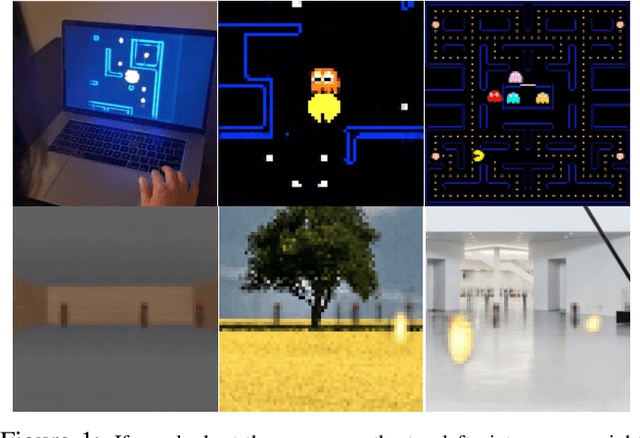
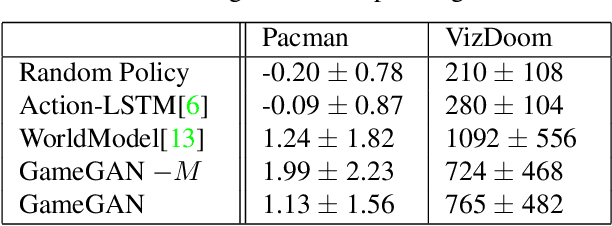
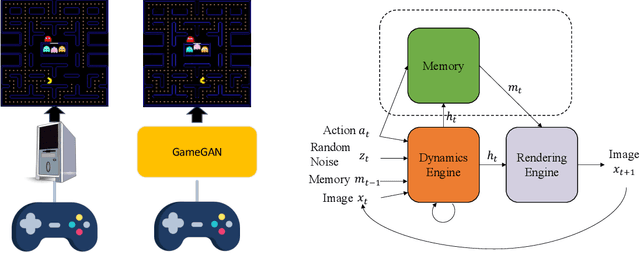

Abstract:Simulation is a crucial component of any robotic system. In order to simulate correctly, we need to write complex rules of the environment: how dynamic agents behave, and how the actions of each of the agents affect the behavior of others. In this paper, we aim to learn a simulator by simply watching an agent interact with an environment. We focus on graphics games as a proxy of the real environment. We introduce GameGAN, a generative model that learns to visually imitate a desired game by ingesting screenplay and keyboard actions during training. Given a key pressed by the agent, GameGAN "renders" the next screen using a carefully designed generative adversarial network. Our approach offers key advantages over existing work: we design a memory module that builds an internal map of the environment, allowing for the agent to return to previously visited locations with high visual consistency. In addition, GameGAN is able to disentangle static and dynamic components within an image making the behavior of the model more interpretable, and relevant for downstream tasks that require explicit reasoning over dynamic elements. This enables many interesting applications such as swapping different components of the game to build new games that do not exist.
The EPIC-KITCHENS Dataset: Collection, Challenges and Baselines
Apr 29, 2020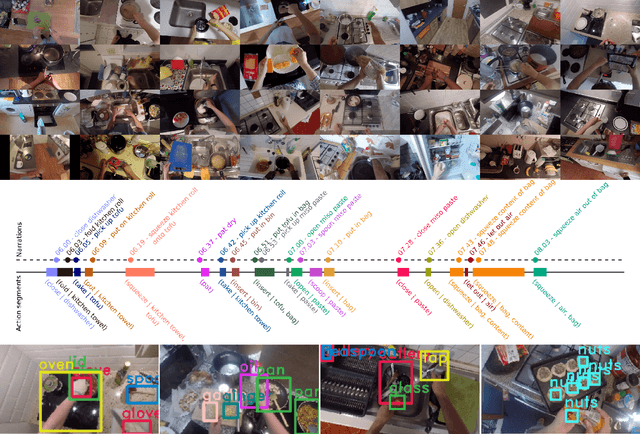

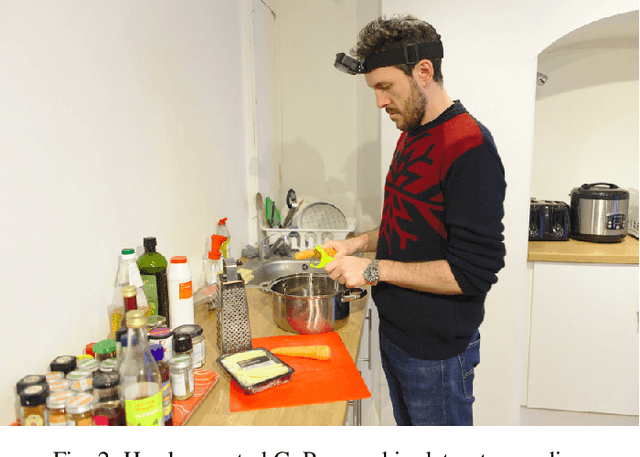

Abstract:Since its introduction in 2018, EPIC-KITCHENS has attracted attention as the largest egocentric video benchmark, offering a unique viewpoint on people's interaction with objects, their attention, and even intention. In this paper, we detail how this large-scale dataset was captured by 32 participants in their native kitchen environments, and densely annotated with actions and object interactions. Our videos depict nonscripted daily activities, as recording is started every time a participant entered their kitchen. Recording took place in 4 countries by participants belonging to 10 different nationalities, resulting in highly diverse kitchen habits and cooking styles. Our dataset features 55 hours of video consisting of 11.5M frames, which we densely labelled for a total of 39.6K action segments and 454.2K object bounding boxes. Our annotation is unique in that we had the participants narrate their own videos after recording, thus reflecting true intention, and we crowd-sourced ground-truths based on these. We describe our object, action and. anticipation challenges, and evaluate several baselines over two test splits, seen and unseen kitchens. We introduce new baselines that highlight the multimodal nature of the dataset and the importance of explicit temporal modelling to discriminate fine-grained actions e.g. 'closing a tap' from 'opening' it up.
Learning to Evaluate Perception Models Using Planner-Centric Metrics
Apr 19, 2020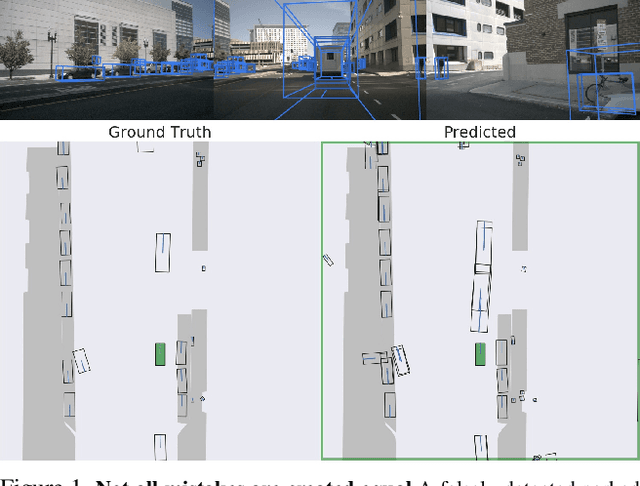
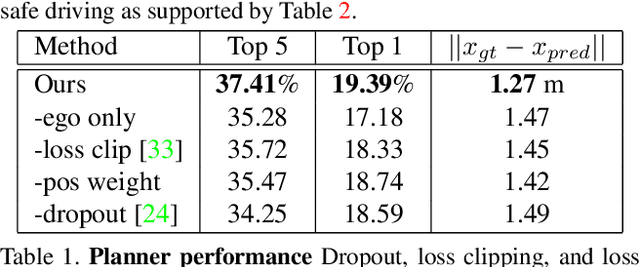
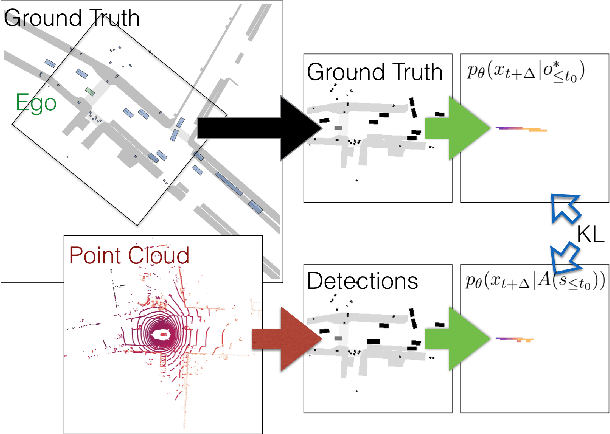

Abstract:Variants of accuracy and precision are the gold-standard by which the computer vision community measures progress of perception algorithms. One reason for the ubiquity of these metrics is that they are largely task-agnostic; we in general seek to detect zero false negatives or positives. The downside of these metrics is that, at worst, they penalize all incorrect detections equally without conditioning on the task or scene, and at best, heuristics need to be chosen to ensure that different mistakes count differently. In this paper, we propose a principled metric for 3D object detection specifically for the task of self-driving. The core idea behind our metric is to isolate the task of object detection and measure the impact the produced detections would induce on the downstream task of driving. Without hand-designing it to, we find that our metric penalizes many of the mistakes that other metrics penalize by design. In addition, our metric downweighs detections based on additional factors such as distance from a detection to the ego car and the speed of the detection in intuitive ways that other detection metrics do not. For human evaluation, we generate scenes in which standard metrics and our metric disagree and find that humans side with our metric 79% of the time. Our project page including an evaluation server can be found at https://nv-tlabs.github.io/detection-relevance.
Neural Data Server: A Large-Scale Search Engine for Transfer Learning Data
Jan 09, 2020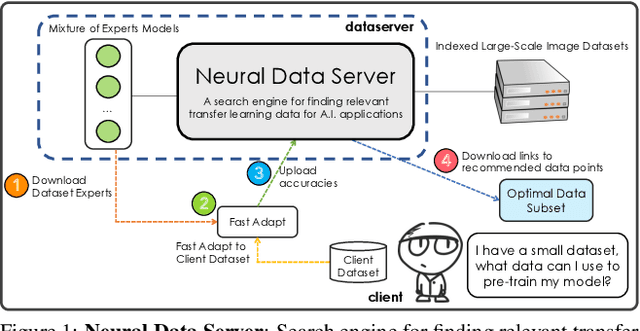

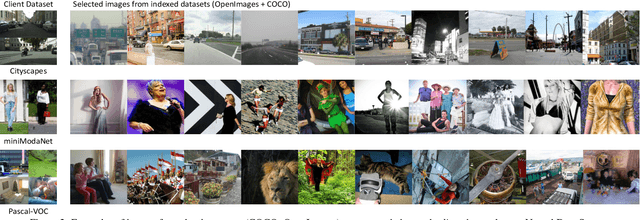
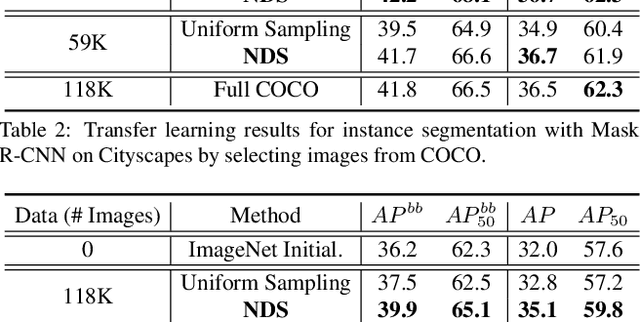
Abstract:Transfer learning has proven to be a successful technique to train deep learning models in the domains where little training data is available. The dominant approach is to pretrain a model on a large generic dataset such as ImageNet and finetune its weights on the target domain. However, in the new era of an ever-increasing number of massive datasets, selecting the relevant data for pretraining is a critical issue. We introduce Neural Data Server (NDS), a large-scale search engine for finding the most useful transfer learning data to the target domain. Our NDS consists of a dataserver which indexes several large popular image datasets, and aims to recommend data to a client, an end-user with a target application with its own small labeled dataset. As in any search engine that serves information to possibly numerous users, we want the online computation performed by the dataserver to be minimal. The dataserver represents large datasets with a much more compact mixture-of experts model, and employs it to perform data search in a series of dataserver-client transactions at a low computational cost. We show the effectiveness of NDS in various transfer learning scenarios, demonstrating state-of-the-art performance on several target datasets and tasks such as image classification, object detection and instance segmentation. Our Neural Data Server is available as a web-service at http://aidemos.cs.toronto.edu/nds/, recommending data to users with the aim to improve performance of their A.I. application.
The Shmoop Corpus: A Dataset of Stories with Loosely Aligned Summaries
Jan 01, 2020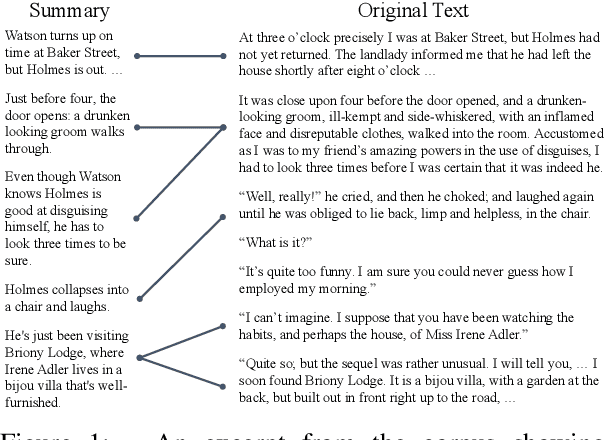
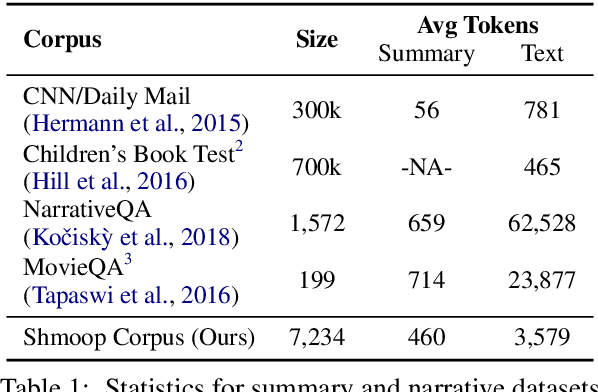


Abstract:Understanding stories is a challenging reading comprehension problem for machines as it requires reading a large volume of text and following long-range dependencies. In this paper, we introduce the Shmoop Corpus: a dataset of 231 stories that are paired with detailed multi-paragraph summaries for each individual chapter (7,234 chapters), where the summary is chronologically aligned with respect to the story chapter. From the corpus, we construct a set of common NLP tasks, including Cloze-form question answering and a simplified form of abstractive summarization, as benchmarks for reading comprehension on stories. We then show that the chronological alignment provides a strong supervisory signal that learning-based methods can exploit leading to significant improvements on these tasks. We believe that the unique structure of this corpus provides an important foothold towards making machine story comprehension more approachable.
Kaolin: A PyTorch Library for Accelerating 3D Deep Learning Research
Nov 13, 2019



Abstract:We present Kaolin, a PyTorch library aiming to accelerate 3D deep learning research. Kaolin provides efficient implementations of differentiable 3D modules for use in deep learning systems. With functionality to load and preprocess several popular 3D datasets, and native functions to manipulate meshes, pointclouds, signed distance functions, and voxel grids, Kaolin mitigates the need to write wasteful boilerplate code. Kaolin packages together several differentiable graphics modules including rendering, lighting, shading, and view warping. Kaolin also supports an array of loss functions and evaluation metrics for seamless evaluation and provides visualization functionality to render the 3D results. Importantly, we curate a comprehensive model zoo comprising many state-of-the-art 3D deep learning architectures, to serve as a starting point for future research endeavours. Kaolin is available as open-source software at https://github.com/NVIDIAGameWorks/kaolin/.
CrevNet: Conditionally Reversible Video Prediction
Oct 25, 2019

Abstract:Applying resolution-preserving blocks is a common practice to maximize information preservation in video prediction, yet their high memory consumption greatly limits their application scenarios. We propose CrevNet, a Conditionally Reversible Network that uses reversible architectures to build a bijective two-way autoencoder and its complementary recurrent predictor. Our model enjoys the theoretically guaranteed property of no information loss during the feature extraction, much lower memory consumption and computational efficiency.
Neural Turtle Graphics for Modeling City Road Layouts
Oct 04, 2019


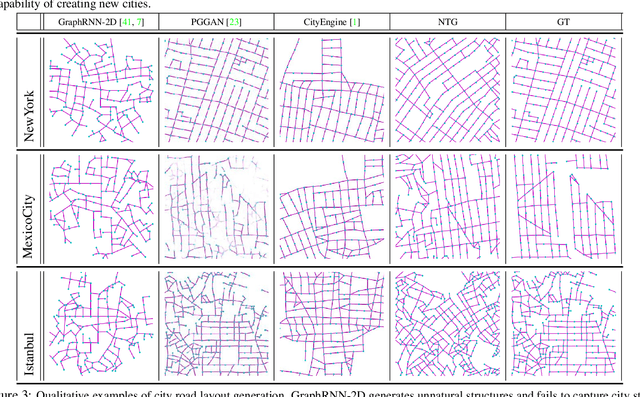
Abstract:We propose Neural Turtle Graphics (NTG), a novel generative model for spatial graphs, and demonstrate its applications in modeling city road layouts. Specifically, we represent the road layout using a graph where nodes in the graph represent control points and edges in the graph represent road segments. NTG is a sequential generative model parameterized by a neural network. It iteratively generates a new node and an edge connecting to an existing node conditioned on the current graph. We train NTG on Open Street Map data and show that it outperforms existing approaches using a set of diverse performance metrics. Moreover, our method allows users to control styles of generated road layouts mimicking existing cities as well as to sketch parts of the city road layout to be synthesized. In addition to synthesis, the proposed NTG finds uses in an analytical task of aerial road parsing. Experimental results show that it achieves state-of-the-art performance on the SpaceNet dataset.
 Add to Chrome
Add to Chrome Add to Firefox
Add to Firefox Add to Edge
Add to Edge